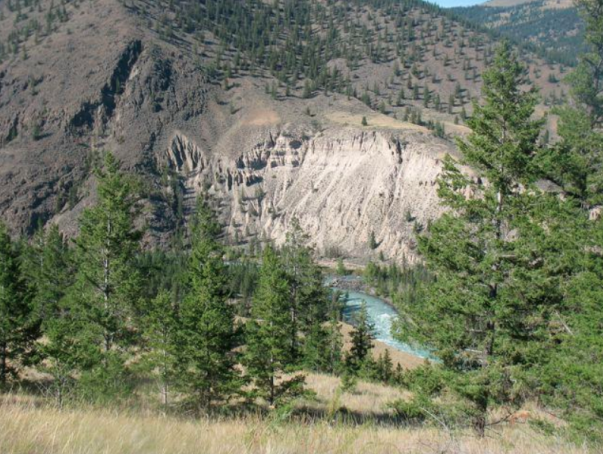Last night I was awakened twice by unusual sounds. The first thing on everyone's minds here is bear, but the first sound I hear is much too small. The nature of the sound is quickly resolved when I open my eyes and in the light of the half moon see the silhouette of a mouse running over the apex of my tent. Impressive climbing skills, I think, and turn over. Less than an hour later I am startled out of sleep by a huge crashing sound followed by a large splash. Having spent many weeks around rocks and cliffs as a geologist and a climber, I immediately recognize the sound: rockfall. After the main fall, the sound of smaller secondary falls continues for a good ten minutes. Over breakfast the next morning, we are serenaded by another rockfall across the river. The events are too close together for rockfall to be considered a rare occurrence here. Why are the banks coming down so quickly along the Chilcotin?
As I am discovering with many things here, it all relates back to glaciers. The physical processes associated with late Pleistocene glaciation are responsible for shaping the Chilko-Chilcotin-Fraser river system. The past 25,000 years have seen a shift from glacial maximum to the warm interglacial period in which we currently reside. Because glaciers are at their smallest during interglacial periods, the fluvial systems that drain them are provided with much less sediment than glacial periods. This leads to a high capacity for sediment transport, but very little sediment to move. The end result is a fluvial system with immense erosive power that cuts down into the rock beneath the channel. Soft glacial sediments erode easily; as material is removed from the rock at river level, newly unstable rock higher up cascades down in dramatic landslides and rockfalls.
We continue to pass crumbling walls along the Chilcotin and Fraser rivers. Where the surrounding rock is soft glacial sediment, the river wears it down quickly and spreads out. The few sections of bedrock that we pass erode less easily and form sheer cliffs and rapid-causing constrictions in the river. But they too will eventually succumb to the erosive power of the river and be washed downhill into the Pacific.

